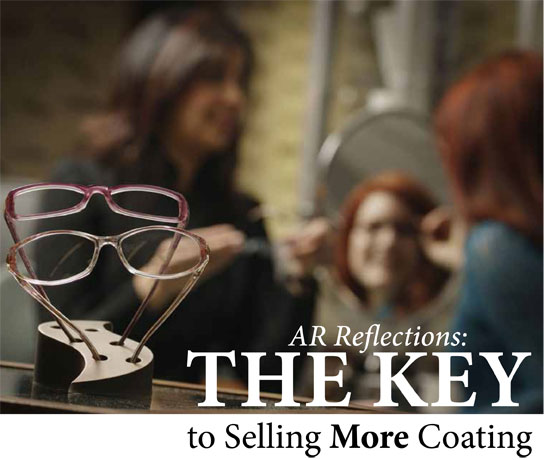By Brian P. Dunleavy
 Daniel Bédard, OD, knows how to work an edger, the central piece of equipment used in lens finishing. He also knows that any piece of equipment an eyecare professional (ECP) brings into his optical store needs to work well with the lenses he dispenses. At Dr. Bédard’s practice, for example, 90 per cent of the lenses dispensed are treated with anti-reflective (AR) coating and a high percentage of patients opt for free-form lenses in both single-vision and progressives. Yet, the optometrist says the practice is still able to finish 99 per cent of the lenses it dispenses on-site.
Daniel Bédard, OD, knows how to work an edger, the central piece of equipment used in lens finishing. He also knows that any piece of equipment an eyecare professional (ECP) brings into his optical store needs to work well with the lenses he dispenses. At Dr. Bédard’s practice, for example, 90 per cent of the lenses dispensed are treated with anti-reflective (AR) coating and a high percentage of patients opt for free-form lenses in both single-vision and progressives. Yet, the optometrist says the practice is still able to finish 99 per cent of the lenses it dispenses on-site.
“Finishing equipment has improved so significantly that we can do drill mounts, wrap sunglass lenses or lenses for frames with unique geometry fairly easily,” explains the partner at Kanata Bridgewood Optometric Centre in Kanata, ON. “The technology has enabled us to provide our patients with fast service, without compromising on quality.”
Finishing lenses is nothing new for ECPs – the technology has been around for more than 25 years – but the ever-expanding array of new lens designs (think free-form) and materials (high-index, mid-index) has presented new challenges when it comes to bringing service into the practice. However, thanks to new technology and software upgrades, optometrists and opticians who want to speed up eyewear turnaround time by installing a finishing lab don’t have to change the lenses they dispense to make the labs viable.
Today, most finishing systems – which include a tracer, a blocker and an edger (costs for all the equipment typically run in the $30,000 to $60,000 range) – run with on-board computers that can be programmed to work with almost any lens product and frame design available, and they can be operated with minimal training. Most optometry practices that finish in-office have an optician on staff run the lab (Dr. Bédard recommends cross-training all optical department staff in dispensing and lens processing, both to increase efficiency and develop a working knowledge of lens and lens finishing technology and processes). Opticians who run their own shops typically train multiple staff members as well.
Before he decided on his current finishing system, which he purchased last year, Dr. Bédard visited Vision Expo East in New York in March 2012 to try out the equipment himself. His practice has had its own finishing lab for more than 10 years but it was time for an upgrade. The equipment they had been using couldn’t provide them with the needed throughput, or capacity, and some new frame designs (with unique shapes) were giving them problems.
Given that a finishing lab is a significant investment, he wanted to make sure he was purchasing equipment that wouldn’t be outmoded with the release of a new lens design or material. For his practice, finishing on-site hasn’t meant a change in the lenses they dispense, only in the services they offer the patients who buy them, and that was key. In particular, he notes, he sells a premium free-form progressive design and wants to be able to finish these lenses in order to offer his presbyopic patients the same convenience as his single-vision patients.
“Today, time is money,” he says. “Finishing our lenses here has enabled us to speed up delivery to our patients. We can give lenses back to some of them the same day, which has meant a huge increase in patient satisfaction. I am very happy with my decision on the new equipment, and I think my patients are, too.”









